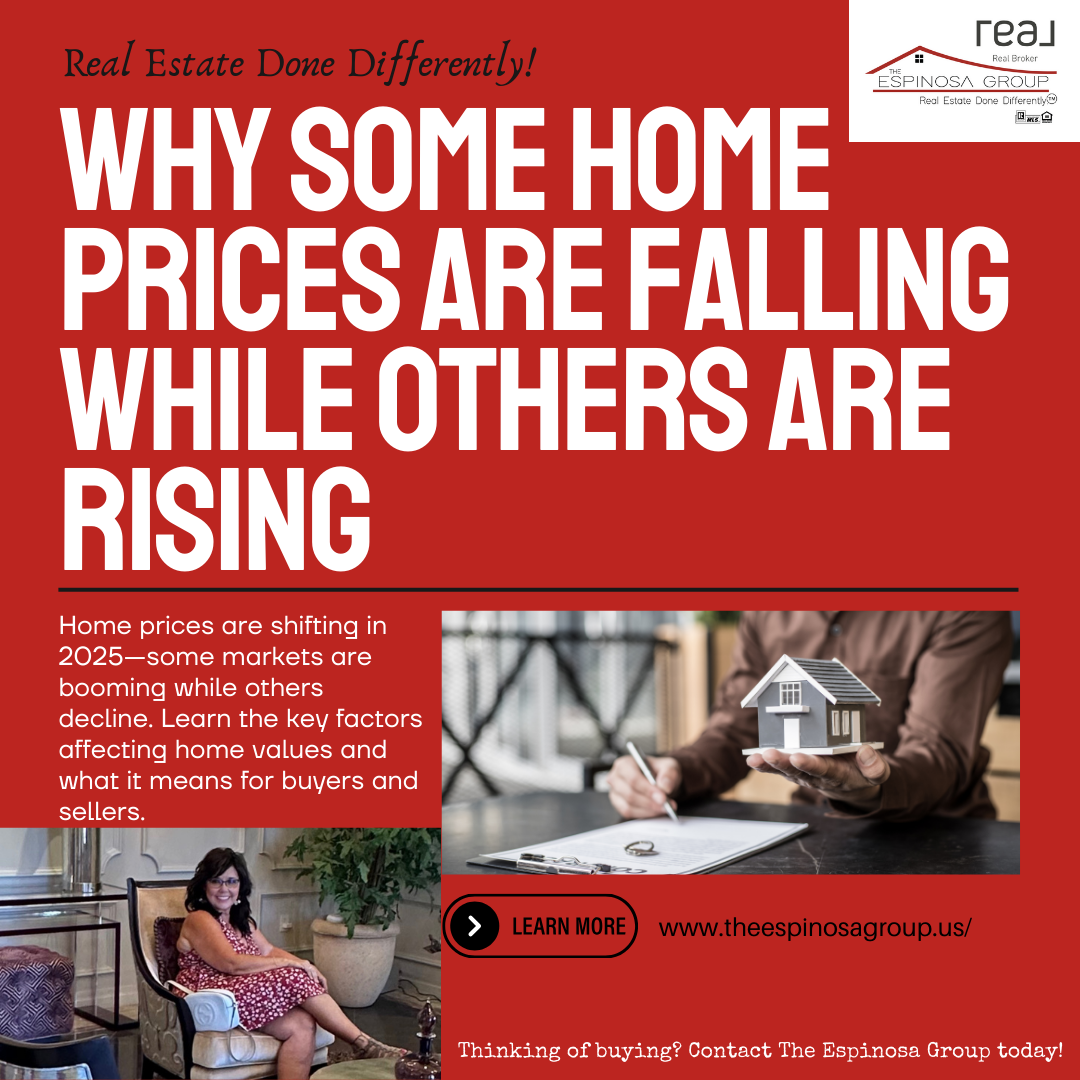Why Some Home Prices Are Falling While Others Are Rising
The real estate market is constantly shifting, and in 2025, home prices are behaving differently depending on location, demand, and economic factors. While some areas see price drops, others experience rising home values. So, what’s causing these differences? Let’s break it down.
1. Location, Location, Location
The biggest factor in home price changes is the location. Markets with high demand, strong job growth, and desirable amenities tend to see price increases, while areas with declining populations or economic slowdowns may experience falling prices.
-
Rising Prices: Cities with booming industries, strong schools, and desirable climates, such as Phoenix or Austin, often see home values climb.
-
Falling Prices: Regions experiencing population declines or economic struggles, like parts of the Rust Belt, may see home prices decrease due to lower demand.
2. Interest Rates and Affordability
Mortgage rates play a huge role in home prices. When interest rates are low, borrowing is cheaper, leading to higher demand and rising prices. When rates rise, affordability decreases, pushing prices down in some markets.
-
Higher Interest Rates: Buyers have less purchasing power, leading to fewer bids and potential price declines.
-
Lower Interest Rates: More buyers enter the market, increasing competition and pushing prices up.
3. Supply and Demand Imbalance
Home values are largely dictated by the balance of supply and demand.
-
Low Inventory = Higher Prices: In areas where housing supply is limited, prices tend to rise due to bidding wars and competition.
-
High Inventory = Falling Prices: If new construction outpaces demand, prices can drop as sellers compete for buyers.
4. Local Job Markets & Economic Growth
Real estate markets closely follow job trends. Areas with strong employment opportunities attract buyers, while regions with job losses see declining demand.
-
Booming Job Markets: Tech hubs like San Francisco and Seattle often see price appreciation.
-
Struggling Job Markets: Cities with high unemployment rates may experience falling home values as fewer people can afford to buy.
5. Migration & Lifestyle Shifts
Recent years have seen shifting migration trends, with more people moving to suburban and rural areas for affordability and space.
-
Increasing Prices: Suburban and Sun Belt cities are benefiting from population booms as remote work allows buyers to move away from expensive metro areas.
-
Declining Prices: Some major cities, particularly in high-cost areas, are experiencing slower price growth or declines as buyers look for more affordable alternatives.
6. Government Policies & Incentives
Changes in tax policies, homebuyer incentives, and zoning laws can influence market trends.
-
First-time homebuyer incentives can increase demand and drive up prices.
-
Stricter lending regulations can slow down demand and cause prices to stagnate or decline.
Final Thoughts
Understanding why home prices rise or fall can help buyers, sellers, and investors make informed decisions. Whether you’re looking to buy in a hot market or take advantage of falling prices in a shifting area, staying informed is key.
📢 Thinking about buying or selling? Let's discuss your local market and find the best strategy for you! Reach out today! 🏡📊
Categories
- All Blogs (185)
- Home Buying Process (17)
- Home Buying, Selling, and Investing Tips (50)
- how to buy a house (9)
- How to sell your house (11)
- Importance of a Real Estate Agent (1)
- real estate investment strategies (10)
- Real estate Market in Arizona (5)
- Selling a home (18)
- STAGING DIFFERENTLY (32)
- Staging tips for selling (17)
- THE AGENT (4)
Recent Posts












